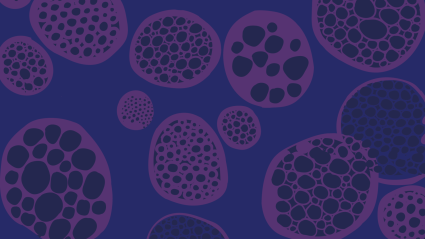
For the 200 million Americans who wear eyeglasses, blurry vision is often the symptom that leads to an eye exam and a prescription for corrective lenses. However, for about 100 Americans each year, blurry vision is an early symptom of a rare disease that causes sudden and irreversible blindness. This rare disease, Leber Hereditary Optic Neuropathy (LHON), typically strikes during adolescence or early adulthood. Individuals with LHON are plunged into a world in which they can no longer recognize faces, drive, or read, disrupting education, careers, and family lives.
LHON is caused by known genetic mutations inherited through maternal lines. All offspring of a woman carrying a mutation, regardless of whether she has vision loss, carry a lifelong risk of sudden blindness. Despite knowing the cause of LHON, there is currently no cure, and there are no therapies to reliably prevent, halt, or reverse LHON vision loss.
Like most rare diseases, LHON research has been hampered by a lack of steady and sufficient government funding, small numbers of patients available for studies, and low incentives for industry investment given the limited market size.
But unlike many rare diseases, LHON affects a type of neuron that is observable using imaging technologies, making it a unique window into the brain. This neuron is the retinal ganglion cell, and more than a million of these cells bundle together to form the optic nerve, the cable that transmits visual signals from the retina to the brain. In LHON, individual retinal ganglion cells die, fraying the optic nerve, which causes vision to blur before a permanent blind spot suddenly appears and obscures central vision—the vision needed to see shapes, colors, and details clearly.
Changes in retinal ganglion cell health and integrity can also indicate the onset and progression of common neurodegenerative diseases. Notable examples include glaucoma, characterized by the loss of retinal ganglion cells and the gradual loss of vision; Alzheimer’s disease, which may involve retinal ganglion cell loss as an early indicator and a potential marker of disease progression; and Parkinson’s disease, where retinal ganglion cell loss may contribute to non-motor visual symptoms such as reduced contrast sensitivity, color vision, and sharpness of vision.
For rare diseases, aligning research efforts with common diseases that share characteristics, like the loss of retinal ganglion cells, is a compelling strategy to overcome the challenges of small market sizes. It also fosters knowledge and resource sharing, while raising awareness and maximizing research impact. For example, by focusing on the specific vision loss caused by LHON, targeted research funding might be used to explore the underlying biology that determines retinal ganglion cell survival. This understanding may lead to prevention and treatment strategies that not only benefit those with LHON but also address a broader range of neurodegenerative diseases, potentially improving millions of lives.
Funding research that aligns multiple disease areas is one strategy being prioritized by the Milken Institute Science Philanthropy Accelerator for Research and Collaboration in our partnership with LHON Collective, a nonprofit founded by LHON patient advocates. This partnership aims to change the therapeutic landscape for individuals with LHON. As part of this work, we have published Leber Hereditary Optic Neuropathy: A Giving Smarter Guide, which highlights five of the most impactful opportunities for philanthropic investment to foster a collaborative, strategic, and focused effort to advance LHON research and therapeutic development.
These opportunities are supported by research on the current scientific landscape and funding trends, along with insights from experts within and beyond the LHON field. We share this knowledge with the public and the scientific and philanthropic communities to promote a unified and targeted strategy for funding rare disease research effectively. This approach will drive meaningful progress, optimize the use of resources, and create lasting change. For individuals with LHON, this means transforming the therapeutic landscape to provide more effective options for preventing, treating, and reversing vision loss, ultimately improving patient outcomes and enhancing the quality of life for the entire LHON community.













